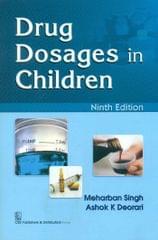Meharban Singh Pediatrics Drug Dosage Pdf

Meharban Singh Pediatrics Drug Dosage Pdf Free Download
- Ylppo (1916). Quoted by Renlov P and Siggaard-Andersen O: Late metabolic acidosis in premature infants-prevalence and significance. Acta Pediatr (Uppsala) 54:53, 1965Google Scholar
- Rearden HS, Graham BD, Wilson JL, Baumann ML, Makepiece UT, Murrayama M: Studies of acid base equilibrium in premature infants. Pediatrics 6:753, 1950Google Scholar
- Kildeberg P: Disturbance of hydrogen ion balance occurring in premature infants II: late metabolic acidosis. Acta Pediatr 53:57, 1964CrossRefGoogle Scholar
- Kildeberg P: Clinical Acid-Base Physiology: Studies in Neonates, Infants, and Young Children. Williams and Wilkins Co, Baltimore, 1968Google Scholar
- Ranlov P, Siggaard-Andersen O: Late metabolic acidosis in premature infants, prevalence and significance. Acta Pediatr (Uppsala) 54:53, 1965CrossRefGoogle Scholar
- Singhi S, Marwah RK, Singh M: Late metabolic acidosis in preterm infants— Clinical profile and response to oral sodium bicarbonate therapy. Indian J Med Res 69: 440, 1979PubMedGoogle Scholar
- Swennigsen NW, Lindquist B: Incidence of late metabolic acidosis in term, preterm and small-for gestational age infants in relation to dietary protein intake. Acta Pediatr Scand 62:1, 1973Google Scholar
- Moore A, Ansell C, Barrie H: Metabolic acidosis and infant feeding. Br Med J 1:129, 1977PubMedGoogle Scholar
- Swenningsen NW, Lindquist B: Postnatal development of renal hydrogen ion excretion capacity in relation to age and protein intake. Acta Pediatr Scand 63:721 1974CrossRefGoogle Scholar
- Kerpel-Fronius E, Heim T, Sulyok E: The development of renal acidifying process and their relation to acidosis in low birth weight infants. Biol Neonate 15:156, 1970PubMedCrossRefGoogle Scholar
- Swenningsen NW: Renal acid-base titration studies in infants with and without metabolic acidosis in post-neonatal period. Pediatr Res 8:659, 1974Google Scholar
- Darrow DC, Da-Silva NM, Stevenson SS: Production of acidosis in premature infants by protein milk. J Pediatr 27:43, 1945CrossRefGoogle Scholar
- Glick H, Allen AC: Diet induced metabolic acidosis in prematurely born infants. J Pediatr 78:1061, 1971Google Scholar
- Rhaiha NCR, Heinonenk K, Rassin DK, Gaull GE: Milk protein quality and quantity in low birth weight infants: metabolic responses and effect on growth. Pediatrics 57:659, 1976Google Scholar
- Kildeberg P, Engel K, Winters RW: Balance of net acid in growing infants. Acta Pediatr Scand 58:321, 1969CrossRefGoogle Scholar
- Harrison VC, Peat C: Significance of milk pH in newborn infants. Brit Med J 4:515, 1972PubMedCrossRefGoogle Scholar
- Schain RJ, O'Brien K: Longitudinal studies of acid base status in infants with low birth weight, J Pediatr 70:885, 1967PubMedCrossRefGoogle Scholar
- Berger HM, Scott PH, Kenward C, Scott P, Wharton BA: Milk pH, acid-base status and growth in babies. Arch Dis Child 53:650, 1978Google Scholar
- Radde IC, Chance GW, Bailey K, O'Brien J, Day GM, Sheepers J: Growth and mineral metabolism in very low birth weight infants, I. Comparison of effect of two modes of sodium bicarbonate treatment on late metabolic acidosis. Pediatr Res 9:564, 1975PubMedCrossRefGoogle Scholar
- Aperia A, Broberger O, Herin P, Thodenius K, Zetterstrom R: A comparative study of the response to an oral NaCl and NaHCO3 load in newborn-preterm and full term infants. Pediatr Res 11:1109, 1977PubMedCrossRefGoogle Scholar
Online Course - LinkedIn Learning. A Manual of Essential Pediatrics-Meharban Singh. Thieme Medical and Scientific Publishers, India. Commonly used drugs in children By Dr Sachin Rathod. Dr Sachin Rathod. Pediatric drug dose calculation. Drugs commonly used for children. This book, authored by an eminent neonatologist and academician, is an excellent addition to available books for medical students. The book is written in a simple language and provides up to date information on common pediatric problems. It has 48 chapters. The annexures include WHO growth charts. There is a section. Pediatrics is a dynamic discipline and there is awareness and hope for actualizing outstanding achievements in the field of child health in 21st century and beyond.